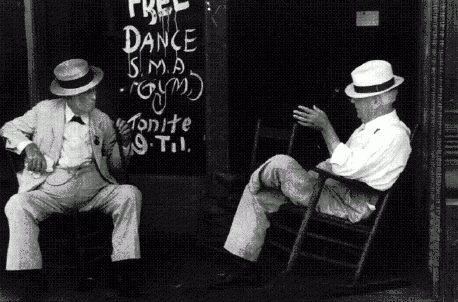Can we go? Please.
Take a Letter…
Oh, this is good. The wonderful Letters of Note site has published a book.
Recognize
Alice Munro has won the Nobel Prize for Literature.
I like this from her 1994 Paris Review Interview:
MUNRO: I write every morning, seven days a week. I write starting about eight o’clock and finish up around eleven. Then I do other things the rest of the day, unless I do my final draft or something that I want to keep working on then I’ll work all day with little breaks.
INTERVIEWER: Are you rigid about that schedule, even if there’s a wedding or some other required event?
MUNRO: I am so compulsive that I have a quota of pages. If I know that I am going somewhere on a certain day, I will try to get those extra pages done ahead of time. That’s so compulsive, it’s awful. But I don’t get too far behind, it’s as if I could lose it somehow. This is something about aging. People get compulsive about things like this. I’m also compulsive now about how much I walk every day.
INTERVIEWER: How much do you walk?
MUNRO: Three miles every day, so if I know I’m going to miss a day, I have to make it up. I watched my father go through this same thing. You protect yourself by thinking if you have all these rituals and routines then nothing can get you.
INTERVIEWER: After you’ve spent five months or so completing a story, do you take time off?
MUNRO: I go pretty much right into the next one. I didn’t use to when I had the children and more responsibilities, but these days I’m a little panicked at the idea of stopping—as if, if I stopped, I could be stopped for good. I have a backlog of ideas. But it isn’t just ideas you need, and it isn’t just technique or skill. There’s a kind of excitement and faith that I can’t work without. There was a time when I never lost that, when it was just inexhaustible. Now I have a little shift sometimes when I feel what it would be like to lose it, and I can’t even describe what it is. I think it’s being totally alive to what this story is. It doesn’t even have an awful lot to do with whether the story will work or not. What happens in old age can be just a draining away of interest in some way that you don’t foresee, because this happens with people who may have had a lot of interest and commitment to life. It’s something about the living for the next meal. When you travel you see a lot of this in the faces of middle-aged people in restaurants, people my age—at the end of middle age and the beginning of old age. You see this, or you feel it like a snail, this sort of chuckling along looking at the sights. It’s a feeling that the capacity for responding to things is being shut off in some way. I feel now that this is a possibility. I feel it like the possibility that you might get arthritis, so you exercise so you won’t. Now I am more conscious of the possibility that everything could be lost, that you could lose what had filled your life before. Maybe keeping on, going through the motions, is actually what you have to do to keep this from happening. There are parts of a story where the story fails. That’s not what I’m talking about. The story fails but your faith in the importance of doing the story doesn’t fail. That it might is the danger. This may be the beast that’s lurking in the closet in old age—the loss of the feeling that things are worth doing.
INTERVIEWER: One wonders though, because artists do seem to work to the very end.
MUNRO: I think it’s possible that you do. You may have to be a little more vigilant. It’s something I never would have been able to think of losing twenty years ago—the faith, the desire. I suppose it’s like when you don’t fall in love anymore. But you can put up with that because falling in love has not really been as necessary as something like this. I guess that’s why I keep doing it. Yes, I don’t stop for a day. It’s like my walk every day. My body loses tone now in a week if I don’t exercise. The vigilance has to be there all the time. Of course it wouldn’t matter if you did give up writing. It’s not the giving up of the writing that I fear. It’s the giving up of this excitement or whatever it is that you feel that makes you write. This is what I wonder: what do most people do once the necessity of working all the time is removed? Even the retired people who take courses and have hobbies are looking for something to fill this void, and I feel such horror of being like that and having that kind of life. The only thing that I’ve ever had to fill my life has been writing. So I haven’t learned how to live a life with a lot of diversity.
The Big Crowd
Our pal Kevin Baker’s new novel, The Big Crowd, was reviewed by Scott Turow yesterday in the Times:
The novel succeeds in creating a compelling imagined world. Most of the telling is through dialogue, and Baker’s re-creation of the cadences and diction of another time is impressive. Charlie is described as “a jake guy,” while Toots Shor says of a bet he’d like to make, “I could use the kale.” In anger, Tom barks “Nuts,” rather than the coarser language of today. And the hit men have the colorful nicknames of bygone times: Kid Twist, Cockeye Dunn, Tick-Tock Tannenbaum.
Best of all, the novel delivers on what the title promises, a detailed rendering of the relationships within that era’s power cabal. “A city like New York,” Charlie tells Tom, “it’s got to have great men — not good men — to run it. . . . We’re held together against the chaos by the grip of a few strong men, that’s all.” Baker offers a vast array of secondary characters — cops and thugs, politicians, bureaucrats, clergymen, bosses and hangers-on — who grow increasingly vivid as they appear and reappear in the gradual recounting of various incidents, like the murder of Peter Panto, an upstart organizer on the docks. Actual historical figures, including Robert Moses and Cardinal Spellman, are served up unsparingly.
I’ve read few other novels that portray in such a nuanced way the temptations of power, the complex division of control in a great metropolis and the perils of political deal-making in that environment. Baker doesn’t like the Big Crowd any more than Tom O’Kane does, but, fortunately for us, he understands its workings very well.
[Photo Credit: Mark Nadir]
Talkin’ the Talk
Over at the New Yorker, Anthony Lane delivers the finest tribute to Dutch Leonard that I’ve come across so far:
Once you hear the Dutch accent you can’t get it out of your head, and for innumerable readers it became a siren song. I fell prey to it in the mid-eighties. Leonard had a breakout, with “Glitz” (1985), and it led many of us to raid the back catalogue with glee. Some of the books weren’t easy to get hold of, and the hunt only sharpened our zeal. A friend and I ravened through whatever we could lay hands on; there is a strange, barely sane satisfaction in happening upon an author—or a painter or a band—and making it your mission to consume everything that he, she, or they ever produced. You rarely succeed, yet the urge for completeness is a kind of love, doomed to be outgrown but not forgotten. I have often pursued the dead in that fashion, but Leonard may be the only living writer who spurred me to such a cause.
…One proof of literary genius, we might say, is a democratic generosity toward your mother tongue—the conviction that every part or particle of speech, be it e’er so humble, can be put to fruitful use. If that means trimming the indefinite article, leaving us with a Albanian and a oyster, so be it. Nothing need go to waste. Richard again, aiming at the formal locutions of a police report, and missing by yards: “I cruised the street and the street back of the residence, the residence being dark, not any light on, but which didn’t mean anything.” So much dumb-ass delusion in so little space, and the linguistic shortfall squares with an overriding sense, throughout the novels, that our grip on the world—and this goes for all of us, not just the chancers and the thugs—is never as secure or as enduring as we would like. Marriages crack like plates; one side of the tracks has no concept of life on the other side, though it may harbor a risky desire to find out; and words will not stay still. That is why the movies inspired by Leonard’s fiction (a slew of disasters plus the odd success, like “Get Shorty,” “Out of Sight,” and “Jackie Brown,” which was based on “Rum Punch”) struggle to match his equilibrium. The souls that he surveyed, even when they were played by George Clooney and John Travolta, were unquiet and fairly uncool. Leonard’s gaze was cool, but, in all honesty, it belonged in a book.
I’m curious what Leonard’s reputation will be in 40-50 years. He sold a lot of books in his time but was also a critical darling. Not many writers enjoy both kinds of success but he sure did.
[Photo Credit: AP]
How Shall I Begin?
Here’s a collection of the first lines of Dutch Leonard’s novels.
Dig in.
1950s
“Dave Flynn stretched his boots over the footrest and his body eased lower into the barber chair.”—The Bounty Hunters (1953)
“At times during the morning, he would think of the man named Kirby Frye.”—The Law At Randado (1954)
“Karla hesitated in the doorway of the adobe, then pushed open the screen door and came out into the sunlight as she heard again the faint, faraway sound of the wagon; and now she looked of toward the stand of willows that formed a windbreak along the north side of the yard, her eyes half closed in the sun glare and not moving from the motionless line of trees.”—Escape From Five Shadows (1956)
“Paul Cable sat hunched forward at the edge of the pine shade, his boots crossed and his elbows supported on his knees.”—Last Stand At Saber River (1959)
1960s
“At first I wasn’t sure at all where to begin.”—Hombre (1961)
“They were watching Ryan beat up the Mexican crew leader on 16mm Commercial Ektachrome.”—The Big Bounce (1969)
“The war began the first Saturday in June 1931, when Mr. Baylor sent a boy up to Son Martin’s place to tell him they were coming to raid his still.”—The Moonshine War (1969)
1970s
“Picture the ground rising on the east side of the pasture with scrub trees thick on the slope and pines higher up.”—Valdez Is Coming (1970)
“The train was late and didn’t get into Yuma until after dark.”—Forty Lashes Less One (1972)
“This morning they were here for the melons: about sixty of them waiting patiently by the two stake trucks and the old blue-painted school bus.”—Mr. Majestyk (1974)
“He could not get used to going to the girl’s apartment.”—52 Pick-Up (1974)
“There was a photograph of Frank in an ad that ran in the Detroit Free Press and showed all the friendly salesmen at Red Bowers Chevrolet.”—Swag (1976)
“A friend of Ryan’s said to him one time, “Yeah, but at least you don’t take any shit from anybody.”—Unknown Man No. 89 (1977)
“This is the news story that appeared the next day, in the Sunday edition of the Detroit Free Press, page one: FOUR TOURISTS DIE IN ISRAELI HOTEL FIRE Tel Aviv, March 20 (AP) – A predawn fire gutted an eight story resort hotel Saturday, killing four tourists and injuring 46 others, including guests who leaped from upper-story windows to escape the flames.”—The Hunted (1977)
“Mickey said, ‘I’ll drive. I really like to.'”—The Switch (1978)
“The gentleman from Harper’s Weekly, who didn’t know mesquite beans from goat shit, looked up from his reference collection of back issues and said, ‘I’ve got it!’—Gunsights (1979)
1980s
“In the matter of Alvin B. Guy, Judge of Recorder’s Court, City of Detroit: The investigation of the Judicial Tenure Commission found the respondent guilty of misconduct in office and conduct clearly prejudicial to the administration of justice.”—City Primeval (1980)
“One day Karen DiCilia put a few observations together and realized her husband Frank was sleeping with a real estate woman in Boca.”—Gold Coast (1980)
“In the winter of 1981 a multimillionaire by the name of Robinson Daniels shot a Haitian refugee who had broken into his home in Palm Beach.”—Split Images (1981)
“Moran’s first impression of Nolen Tyler: He looked like a high risk, the kind of guy who falls asleep smoking in bed.”—Cat Chaser (1982)
“Stick said he wasn’t going if they had to pick up anything.”—Stick (1983)
“‘He’s been taking pictures three years, look at the work,’ Maurice said.”—LaBrava (1983)
“The night Vincent was shot he saw it coming.”—Glitz (1985)
“Every time they got a call from the leper hospital to pick up a body Jack Delaney would feel himself coming down with the flu or something.”—Bandits (1987)
“Frank Sinatra, Jr., was saying, “I don’t have to take this,” getting up out of the guest chair, walking out.”—Touch (1987)
“Chris Mankowski’s last day on the job, two in the afternoon, two hours to go, he got a call to dispose of a bomb.”—Freaky Deaky (1988)
“The Blackbird told himself he was drinking too much because he lived in this hotel and the Silver Dollar was close by, right downstairs.”—Killshot (1989)
1990s
“When Chili first came to Miami Beach twelve years ago they were having one of their off-and-on cold winters: thirty-four degrees the day he met Tommy Carlo for lunch at Vesuvio’s on South Collins and had his leather jacket ripped off.”—Get Shorty (1990)
“Dale Crowe Junior told Kathy Baker, his probation officer, he didn’t see where he had done anything wrong.”—Maximum Bob (1991)
“Sunday morning, Ordell took Louis to watch the white-power demonstration in downtown Palm Beach.”—Rum Punch (1992)
“One evening, it was toward the end of October, Harry Arno said to the woman he’d been seeing on and off the past few years, ‘I’ve made a decision. I’m going to tell you something I’ve never told anyone before in my life.'”—Pronto (1993)
“Ocala Police picked up Dale Crowe Junior for weaving, two o’clock in the morning, crossing the center line and having a busted taillight.”—Riding the Rap (1995)
“Foley had never seen a prison where you could walk right up to the fence without getting shot.”—Out of Sight (1996)
“Tyler arrived with the horses, February eighteenth, three days after the battlship Maine blew up in Havana harbor.”—Cuba Libre (1998)
“They sat at one of the sidewalk tables at Swingers, on the side of the coffee shop along Beverly Boulevard: Chili Palmer with the Cobb salad and iced tea, Tommy Athens the grilled pesto chicken and a bottle of Evian.”—Be Cool (1999)
2000s
“The church had become a tomb where forty-seven bodies turned to leather and stains had been lying on the concrete floor the past five years, though not lying where they had been shot with Kalashnikovs or hacked to death with machetes.”—Pagan Babies (2000)
“Dennis Lenahan the high diver would tell people that if you put a fifty-cent piece on the floor and looked down at it, that’s what the tank looked like from the top of that eighty-foot steel ladder.”—Tishomingo Blues (2002)
“Here was Antwan, living the life of a young coyote up in the Hollywood Hills, loving it, but careful to keep out of the way of humans.”—A Coyote’s in the House (2004)
“Late afternoon Chloe and Kelly were having cocktails at the Rattlesnake Club, the two seated on the far side of the dining room by themselves: Chloe talking, Kelly listening, Chloe trying to get Kelly to help entertain Anthony Paradiso, an eighty-four-year-old guy who was paying her five thousand a week to be his girlfriend.”—Mr. Paradise (2004)
“Carlos Webster was fifteen the day he witnessed the robbery and killing at Deering’s drugstore.”—The Hot Kid (2005)
“Honey phoned her sister-in-law Muriel, still living in Harlan County, Kentucky, to tell her she’d left Walter Schoen, calling him Valter, and was on her way to being Honey Deal again.”—Up In Honey’s Room (2007)
“They put Foley and the Cuban together in the backseat of the van and took them from the Palm Beach County jail on Gun Club to Glades Correctional, the old redbrick prison at the south end of Lake Okeechobee.”—Road Dogs (2009)
2010s
“Xavier watched two Legionnaires stroll out form the terminal to wait for the flight: dude soldiers in round white kepis straight on their heads, red epaulets on their shoulders, a wide blue sash around their waist, looking like they from some old-time regiment except for the short pants and assault rifles.”—Djibouti (2010)
“Raylan Givens was holding a federal warrant to serve on a man in the marijuana trade known as Angel Arenas, forty-seven, born in the U.S. but 100 percent of him Hispanic.”—Raylan (2011)
Bonus
“A time would come, within a few years, when Ruben Vega would go to the church in Benson, kneel in the confessional, and say to the priest, ‘Bless me, Father, for I have sinned. It has been thirty-seven years since my last confession…. Since then I have fornicated with many women, maybe eight hundred. No, not that many, considering my work. Maybe six hundred only.'”—”The Tonto Woman,” a short story that appeared in Roundup: An Anthology of Great Stories By The Western Writers of America (1982)
(In this case I think you need all of the above to truly capture Leonard’s touch. By the way, “The Tonto Woman” was made into a tasty short film that was nominated for an Oscar.)
“Joe Sereno caught the Odyssey night clerk as he was going off: prissy guy, had his lunch box under his arm.”—Naked Came the Manatee, a novel written serially by Dutch and 13 other mostly Florida-based writers including Carl Hiaasen, Dave Barry, James W. Hall and Paul Levine. (1996)
“They had dug coal together as young men and then lost touch over the years.”—Fire in the Hole, a short story published as an e-book (2001)
“A German prisoner of war at the camp called Deep Fork had taken his own life, hanged himself two nights ago in the compound’s washroom.”—Comfort to the Enemy, a serial published in the New York Times (2005)
[Photo Credit: David Guralnick / the Detroit News]
Not Forgotten
Over at Narratively, Shannon Firth profiles our man, Michael Popek (aka “unmoderated”):
Michael Popek remembers visiting his grandfather’s four-story home in New Jersey, where anything that could be collected, was—stamps, toy train cars, cap guns, autographs, baseball cards. “There was a standing order not to touch any of the WWI grenades,” Popek says. As far as his grandfather knew, these were still live and active.
Those visits happened long before Popek, now 35, started gathering his own assortment of collectibles: things left between the pages of books, or as he calls them, Forgotten Bookmarks. It seems destined to happen, given that Popek comes from a family of collectors. He grew up in an old farmhouse in Oneonta, a small town in upstate New York. His father, Peter Popek, a former UPS deliveryman, started a book business in the mid-eighties, but only after coming upon a too-good-to-be-true deal at a local auction.
The offer was 5,000 books for $10. He paid an additional $10 for delivery. According to the elder Popek, no one wanted these books, including him. “We had no interest in books. We didn’t know anything about them. But we didn’t want to waste ‘em,” Peter Popek says. Within a few years, Michael’s father had filled a barn in the backyard with over 20,000 books. The Popeks also bought and sold antiques and owned a small shop in town, not far from their house. Slowly, though, the book collection muscled its way into the antique shop and took over much of the space.
[Photo Credit: Jessica Bal]
Stacked
This looks cool, a documentary about Larry McMurty’s book auction last summer.
[Photo Credit: Fort Worth Star-Telegram/Associated Press]
Million Dollar Movie
From Hollywood: Stars and starlets, tycoons and flesh-peddlers, moviemakers and moneymakers, frauds and geniuses, hopefuls and has-been, great lover and sex symbols, Garson Kanin’s appealing, gossipy memoir:

The power of the dream is largely generated by the fact that every now and then it comes true.
It came true for a slightly chubby, preppy blonde from Indiana named Jane Peters, later known as Carol Lombard, and later still as Carole Lombad.
“I think that ‘e’ made the whole fucking difference,” she said to me one day, during the time I was directing her in They Knew What They Wanted. (It should be noted that this was Carole’s normal style of speech. She used the fully, juicy Anglo-Saxon vocabulary; yet it never shocked, never offended because she was clearly using the language to express herself and not to shock or offend).
She was the only star I have ever known who did not want a dressing room on the set. What little make-up she used, she put on herself. She preferred to look after her own hair. All she asked for was a chair and a small table. There she would be, twenty minutes or half an hour before she was due, ready and able. I never knew her to fluff a line. She liked everyone and everyone adored her. She was happy.
On days when she was not required, she would drive in anyway, all the way from the Valley. The first time she turned up on one of those days, I panicked, certain there had been a mistake.
“What’re you doing here?” I asked. “You’re not called today.”
“Piss off!” she said. “I’m in this picture.”
She wanted to be around, to stay with the feel of things. She did not want to lose the momentum of work. On these days, she would hang around the set, watching; come along and look at the rushes; talk to various members of the cast. She was valuable.
I thought her a fine actress, one of the finest I have ever encountered. She was completely untrained, had never appeared on the legitimate stage. She came to Hollywood from Fort Wayne, Indiana, became a child actress, and later went to work for Mack Sennett as one of his bathing beauties. But the movies were growing, the business was burgeoning, and there was room at the top for a beautiful, talented girl.
Tremendously versatile, one of her successes was My Man Godfrey, the so-called screwball comedy, in which she struck new and original comic notes. But she was equally comfortable in serious drama. I remember an early talkie called Ned McCobb’s Daughter, from the play by Sidney Howard, who also wrote They Knew What They Wanted. Her performance in Twentieth Century, opposite John Barrymore, is one of the best ever seen on the American screen. I once complimented her on her admirable range.
“It’s the guys. It’s all those goddamn different studs I’ve knocked around with. You know how it is. You always try to get in solid with the son of a bitch by playing his game. So when I was around with Bob Riskin—the prick never wanted to marry me, can you feature it?—I started in reading books. I don’t mean just bullshit. I mean book books. Aldous Huxley and Jane Austen. Charles Dickens. William Faulkner. Because Bob, he was in intellectual. My first. Brainy as a bastard. And I felt I had to keep up. You know how it is. And then with Russ Colombo, he—Jesus Christ, he was a handsome hunk—with him, I got to know all about music and songs and songwriting and publishers. And about records and recordings and which was the best key and big bands and sidemen and drummers. I even started in writing songs. Sometimes with him. We’d be in the hay and in between we’d make up songs. Can you imagine it? Listen, there were a few times there we got so interested in the songs we forgot to get our ashes hauled!” She laughed.
Has there ever been such a laugh? It had the joyous sound of pealing bells. She would bend over, slap her perfect calf, or the floor, or a piece of furniture. She would sink into a chair or to the ground. She would throw her head back. And you would be riveted by that neck. That throat.
“And not only music. With Russ, I became just about the best goddamn Italian cook there is. I can do anything in that line because I used to do it for him. Learned it. Chicken Cacciatora. Eggplant Parmigiano. Veal Marsala. Squid. Anything. You name it. Now, with Philo it was different. Because, after all Philo. It was legitimate. We were married.” (Philo was her name for William Powell because he had once played the detective Philo Vance.) “With him, it was wife stuff. That’s when I learned how to put a house together, and have everything supplied. And how to take care of his clothes. And what had to be dry cleaned and what not. I mean, I was the best fuckin’ wife you ever saw. I mean a ladylike wife. Because that’s how Philo wanted it.

“And now with Clark it’s the ranch and the horses and the fishing and shooting. The only trouble is—about the shooting I mean—I’ve gotten to be so much better than he is that I’ve got to hold back. I can shoot like a sonofabitch, y’know. Anything. So when you say ‘versatile’—well, I owe it all the boys. They made me what I am today.”

Bronx Banter Interview: Stephen Rodrick
Stephen Rodrick is one of our finest magazine writers and this spring he published a compelling memoir about this father, The Magical Stranger. Check out book excerpts in the New York Times; Slate, and a nice long one in Men’s Journal. And visit The Magical Stranger website.
I had the chance to talk with Stephen about the book recently. Here’s our conversation:

Q: As a magazine writer you are used to dropping in on a subject and then you’re out. What was it like having to live with this material for a long period of time?
SR: Well, for my sanity and finances I kept my hand in the magazine game writing three or four pieces a year while reporting the book. That gave me some much-needed distance from all the heaviness that permeates the book. I remember I was writing the chapter on re-creating my dad’s accident and was sinking into the pit of despair, and next thing I knew I was in Malibu with Rick Rubin as he dodged the pot smoke from the guitarist of System of the Down and brought his own eggs to a restaurant before going to work out with the cranky doctor guy from Scrubs. The same thing with the Lindsay Lohan/Canyons story, I just returned from the Gulf where Tupper was struggling through his last cruise and we watched Iranian ‘fishing’ boats shadow the USS Lincoln’s moves through the Gulf. I flew off back through the protests in Bahrain and a few weeks later I’m in the back of Lohan’s Porsche as she flips off the paparazzi in Santa Monica. They were nice Fellini moments to break up trying to decipher the precise speed that my dad’s plane hit the water before disintegrating.
Q: Were there any memoirs that you read, and particularly liked, before writing yours?
SR: I was drawn to James Salter’s Burning the Days because he was a combat pilot back in the 1950s and wrote beautifully about the flying life. On the flip side, Hanif Kureishi’s The Buddha of Suburbia is a novel that reads like a memoir and I’ve read that a half-dozen times. The two couldn’t be more different, but they both share a certain simplicity in the language that I loved.
Q: Have you always felt that this was the story one day you were destined to tell?
SR: I don’t know if I felt I was destined to write it, but it had been gnawing at me for years and i just didn’t feel I had the emotional strength to write it in the way I knew I wanted to do it. The final kick in the ass, was VAQ-135, my Dad’s old squadron, was phasing out the Prowler, his old plane, and I knew it was now or never if I wanted to follow his old squadron flying his old plane. They even got me up in a flight, which was one of the most frightening and meaningful moments of my life even if I did boot a spectacular yellow fluid into my barf bag.

Q: How did you arrive at the narrative structure for the story, shifting between your story from childhood through the present, with that of Tupper and the current Navy?
SR: It just sort of happened naturally, I’m not a big outliner, but I knew the chapters I wanted to write and they somehow clicked into place. I know I wanted to start at both of our points of entry: For me, the day my father was killed marked an obvious demarcation in my life. For Tupper, it was the day that he took command. From there, things sort of tumbled out naturally going back and forth between my journey and Tupper’s. I was hoping the reader would be able to see what life was like from the two perspectives: The son left behind and the father trying to do his job.
Q: Early in the story you talk about being described as “the magical stranger” by a friend who says that you have this remarkable ability to adapt to social situations and put people at ease.
SR: Yeah, as a magazine writer, you’re always the new kid, you don’t know where the bathrooms are etc. I don’t put on a persona when I go and talk with people; I’m just me, just a paying more attention me. With very few exceptions, I’ve been blessed to write about men and women I find fascinating so I don’t have to fake it.
Q: As a military kid you moved around a lot, always being the new kid. Is that charm, for lack of a better word, the ability to get people to feel comfortable, something that’s conscious?
A: That’s a really good question. Is it a nature or nurture thing? I was always the smartass from the start, but I don’t know if it was just the nature of my personality or part of always being the new kid and realizing that the best way to ingratiate yourself is to get people either laughing with you or laughing at you, whichever one doesn’t really matter.
Q: Has it ever gotten in the way of you forming intimate relationships–not with subjects so much, as friends, family?
SR: I’m not sure. There’s a restless nature in me that doesn’t always mesh with every-day life. I think the key is finding like-minded people who understand that and still love you anyway. I think one of the great things about doing the book was finding out that my purportedly straight-arrow dad was a troublemaker in his younger days. I’d always felt with my personality that I was an alien in my own family and a massive disappointment. I found a diary he kept when he was thirteen, the age I was when he was killed. And sure, he’s serving mass and getting scholarships, but he’s also getting called a punk by the nuns and hitchhiking throughout New England as an eighth grader. I went to his 50th high school reunion and a friend of his told me: The stuff Pete cared about, he was the best and smartest kid I ever knew, the stuff Pete didn’t care about he didn’t give a damn about and he’d stare out the window for the entire class. And that was gratifying to me because I’m sort of the same way. I found a precious connection that I never knew was there and eased my burden of never feeling like I could measure up to him. It’s like he was a statue on a pedestal that magically walked off it and put his arm around me and said, “Son don’t sweat it, I’ve done some dubious things. It’s ok.” There’s never been a man more excited that his dad was a teen fuck-up than me.
Q: You also say that it was your father who was really the magical stranger. How did you fantasize how things would have turned out had he not been killed?
SR: Well, there’s the fantasy and the reality. The fantasy is he would of came home and we would have probably moved to DC and he would have kicked me into shape and I would have ended up at Georgetown or one of the Ivies and gone on to be president of the United States. The reality is he was a devout Catholic while I was distancing myself from Catholicism quickly before I hit twenty. We probably would have fought over that. So, you just never know how it could have been. But I’d pay any price to have the chance to find out.
Q: You’re tough on yourself when you describe yourself as a kid. Now that the book is finished, have you let go of any of the harsh judgment?
SR: Ha! I wish. I think it’s hard to shake a childhood where everyone is constantly disappointed in you. Whether it’s a priest—later busted for pedophilia—telling you that “you’re the man of the house,” and then not stepping up or entering high school with one of the highest board scores and the vice principal telling your Mom at graduation that “Steve was the student with the most potential who did the least with it.” (Thanks Ms. King!). It’s hard to shake that even after having success as an adult. I still see myself as inherently lazy while my wife sees me as a workaholic. But I’m trying to give myself more of a break. Sometimes, I tell myself, Hey, you lost your Dad at thirteen when you needed him most and you might have stumbled, but you didn’t fall. You still turned out ok. You’re a man your father would be proud of. (Well, he wouldn’t be proud that I hate the Red Sox, but most things). I try to own that as much as I can.
Q: Did you emphasize your difficulties in the book for the sake of a dramatic arc?
SR: Nope. The one thing I wanted to do with my story and my family story and Tupper’s story was to keep it simple: This how this happened. This is how we dealt with it. One thing I can say is I lived this life, not just my own but Tupper’s life for three years. You can criticize my approach as artless, but I’ve never had much time for grandiose set-ups, faux Faulkner hand wringing, or 2000 words of throat clearing before you get down to the task at hand. To me, this is what my life and the life of the others I wrote about really were like, good and bad, dangerous and idiotic.

Q: I was compelled by how your family dealt with things by not dealing with them—the Rodrick way. When you approached your mom to talk about your father you discovered that you’d both avoided it in order to spare the other person’s feelings. Yet your mom seemed willing, appreciative even, to share her memories. Has your relationship for the better?
SR: It has. We sort of had this standoff for decades where she thought I didn’t want to talk about my father and she thought I didn’t want to talk about him. It really took me writing the book for us to breakthrough that wall. So thank you to the publishing world.
Q: How did she like the book?
SR: Funny story. My mom is the only person in the book that I let read it in galleys. I went to see visit her in Michigan and stayed with my sister about 20 miles away. After she had the book for a few days, she told me she had read it and told me to come over for lunch and we could talk about it. I arrived, very nervous and sweaty. But she told me she liked it and that she was very proud. I was so relieved; we watched the Lions lose, had lunch and took her dog for a walk. It was perfect. I drove back to my sister’s and spent about 24 hours in a state of euphoria, blasting their stereo and dancing around in my boxers. But then my sister came up for work and just shook her head at me and said, “You’ve got to go and talk to mom again, she’s bitching about the book all over town.” (Mind you, all over town would be maybe five people).
I drove back over to her house with a single Xanax in my jean pocket not sure if it was for her or me. She let me in and said, “I don’t want to rain on your parade, but I come across as a bit of a bitch in the book.” I told that wasn’t other people’s take, but she said “It’s not anything you say isn’t true, but there’s no mention that even in the worst of the times, I kept you fed, washed your clothes, and car-pooled us all over town.” And she was absolutely right; I’d fallen into a somewhat myopic well on that subject. I was happy to add a few lines to the book to make it clear, it was the least I could do. My mom is a sweetheart who was left with three kids at 36, one who was a constant pain in the ass—that would be me. She did the best she could and none of her children were lost. We’re all doing pretty well and that’s a testament to her.
Q: I think you’re fair to your mom. What I found moving was that she apologized to you for being so hard on you back when you were a kid. To me that’s the real takeaway—parents do the best that they can.
SR: That’s it exactly. The Go-Betweens have a song called “Devil’s Eye” that has a line that goes “Sometimes, we don’t come through, sometimes we just get by,” and that. I think, is pretty true of the human condition. Saying you’re sorry and forgiving make the world go round. And Chipotle.
Q: You don’t really mention it in the book but did you seek out father figures, mentors, or just older men to hang out with as you’ve grown up?
SR: No, not really, probably to my own detriment. I know this sounds like something out of a cheddar voiceover in a Western, but I’ve always found more comfort in the company of women than men. Maybe it’s not surprising since I grew up with my mom and two sisters, but there it is. Not having a mentor professionally probably has hurt me at different points, but it’s also saved me from idol worship, which might be an even tradeoff.
Loudon Wainwright has a great song “One Man Guy,” that his own children, Rufus and Martha, sing probably to taunt him a bit. (My ex-wife hated that I loved it.)
The solo life that Loudon’s raves about as a young man comes across as sad in middle-age so I’ve made an effort to reach out and make more dude friends. But they’re all equals–Fed Ex delivery guys, Navy pilots, book editors–no one that I put on a pedestal as a mentor. I think part of that is because I always had my father on that pedestal, there wasn’t room for anyone else.
Q: It makes sense about being more comfortable around women, and not having room for mentors with your father looming so large. Have there been other magazine writers that, if you haven’t worshipped, then admired? Both in creatively and just how they conduct themselves?
SR: I fell in love with magazines as a kid reading Sports Illustrated, all those bonus pieces week-after-week. Frank Deford’s byline is the first one I distinctly remember. That’s not a bad one. His pieces are not-flashy, but funny and human. That’s something to shoot for.
Someone gave me Pat Jordan’s first memoir, A False Spring, and I’ve read it many times. I finally met him a few years back when I was in Florida on a spring training story and a friend suggested I meet Pat so he could finally tell me the difference between a curve and a slider.

I went to his house in Fort Lauderdale. We had a drink and either he or his wife was packing heat. There were dogs and birds screeching and Jordan kept telling me, “Get out of New York, move to Florida, you can live on 65 grand here, make 65, you’ve made your nut.” I was like “What is this nut you so speaketh about?” We went out for dinner and I think New York Magazine ended up buying a take-out steak for their dogs. And I thought, Now, here is a guy I can look up to.
Q: That’s great. In the book, you talk about sports and politics being a big deal for you as a kid but only touch on how music impacted your life. When did it become a major part of who you were?
SR: I’ve got a big weakness for the line of tart, clever British songwriters from Ray Davies to Paul Weller, to Damon Albarn, to Pete Doherty. Oh The Beatles aren’t so bad. My love of music started as a kid listening to transistor radio on my back delivering newspapers. I remember hearing Supertramp’s “Take the Long Way Home” at 12 or 13 and going ‘oh wow, this song isn’t a happy one. Guy’s talking about being the joke of the neighborhood, what he could have done with a little more time, and that his wife thinks he’s gone insane. And that was a Top 40 song! I loved that you could tell a story in three to five minutes. I love the economy of language you need to write a great pop song.
The older I get the more I listen to it as I write to set a mood, if I need little anger/outrage I go with The Stones’ “Monkey Man” because of the great marimbas at the beginning, the swaggering guitars, and the bad/sublime lyrics: “I’m a flea bit peanut monkey, all my friends are junkies. That’s not really true. I’m a cold Italian pizza I could use a lemon squeezer.” He’s an animal an unreliable narrator, and then pens worst line ever. Genius!
Q: “Monkey Man” is one of my all-time favorites. What were you listening to while you wrote the book?
SR: Half the World Away by Oasis. ‘So here I go, still scratching around in the same old hole, my body feels young, but my mind is very old,’ was sort of my personal motto for the book along with another line, “I’ve been lost, I’ve been found, but I don’t feel down.” ITunes says I listened to the song 397 times. Perhaps that is too much.
Q: What was the reaction from the military guys you hung with after the book came out?
SR: I’d say 99% of them loved it and loved the Catch-22 tales I tell of squadron life. Of course, they’re human and they all wish I’d left the story about the time they buzzed Midway Island causing an ecological furor or sprinted across an Army base in Japan just in a kimono hoping to thank the base CO for his hospitality at 4am in the morning out of the book. But they’ve been so supportive, I consider myself lucky to have these nuts in my life.
Q: Beyond that, what has been the response from military families that you don’t know to the book?
SR: I’ve got some great notes on my website and people coming up to me at readings and saying, ‘I lost my dad in a helo crash when I was twelve and your book said all the things I couldn’t say.’ That means more to me than I can say.
Q: How do you feel—exhilaration, relief, let down?—now that it’s done?
SR: Well, like most of life it has been alternately spectacular and heartbreaking. The friends and family that have come up to me at readings and written to be about my Dad makes me feel closer to him than I ever felt possible. But there is a bit of postpartum depression that sets in when your book is done. Should I have spent another year on it? Should I have spent a year less on it? They’re no greater second guessers than authors. Well, except for Stephen A. Smith. I love that guy.
Q: What does it say about the world that you can spend three years on a book but one quote of Serena Williams saying something dumb and that’s what people focus on?
SR: There’s not a lot you can do about it: She said it, it exploded, and the rest of the story has sort of have been forgotten. That happens, but it’s frustrating because I think there’s a lot of stuff in the story that paints her as a real, live human trying to figure life out. But that’s the nature of the business. It’s all the nature of modern life if you search my name on Nexis—not that I would do such a narcissistic thing!—you’ll find eighty or ninety mentions of the Serena and Lohan pieces, and maybe five or six on my book. But hey, THAT’S SHOW BUSINESS.
Q: You do a lot of magazine stories on jocks and entertainers. Access is so difficult to come by these days. How do you work around the restrictions?

SR: That’s a simple one: unless I can get enough to spend enough time to write about anyone—navy pilot, tennis player, independent film festival guy– where I feel like I have a sense of who they are, then I’ll pass on the story. I’ve only done two or three profiles based on a single sit-down interview and I hated it. I know there’s a whole genre of magazine profile writing where the guy–and it’s always a guy–tap dances for 2000 words before you get a snippet of the guy he’s writing about. It’s like a 30-second commercial where you don’t know what the hell they’re selling until the tag line at the end. I’ll tell my editor to cut the story from 4,500 to 2,500 words just so I don’t have to play Three Card Monte for half the piece. I want to write ‘this is what the person was like from observing him and watching him in action not ‘this is what the person is like in my fantasy relating to my childhood in the coalfields of West Virginia.
Q: Last one. I wonder, do you still feel the same restlessness now that you did when you were a kid or even in your 20s?
SR: I do, but in a different way. Now I just want to have two residences, down from the four or five of a decade ago. I’d love someday to own a summer place up in Anacortes, Washington where the book is largely set. It is so goddamned beautiful and it’s 58 degrees and misty which is my kind of weather. It’s strange, I only lived there from seven to thirteen, but I feel that place is home deep down in my bones. I remember being in Dublin once and I heard some teen buskers playing this beautiful song “Learn to Be Still” and I was struck: That’s exactly what I need to do: Learn to be still. I gave them money and had them play it again. A little later, I found out it was an Eagles song. I took that as an ominous sign and kept moving.
Q: Ha. So, what’s next?
SR: Therapy.
New Hope for the Dead
A treat: Lawrence Block on Charles Willeford:
Charles Willeford took writing very seriously, and applied himself to it wholeheartedly for some 40 years. He started out as a poet; his first book, Proletarian Laughter, was a collection of poems. He began publishing paperback fiction while serving his second hitch in the military, and kept at it, and worked hard at it.
With the Hoke Moseley novels, he got a taste of the commercial success that had for so long eluded him. When I learned of his death, I was struck by the irony of it; he was just beginning to get somewhere, and the Fates took him out of the game.
Speak, Memory
Over at audible, you can download the essay, “In Memory of a Friend, Teacher and Mentor” by Phillip Roth for free. Here’s more on the story at the Paris Review.
[Photo Credit: Dan Burn-Forti]
BGS: A Sportswriter Goes to War

Here’s my Introduction to Southwest Passage: The Yanks in the Pacific, available now.
When he went off to cover the war in the Pacific in January 1943, John Lardner was twenty-nine years old and, thanks to his weekly column in Newsweek, already a major figure in sportswriting. Nothing at Madison Square Garden or Yankee Stadium, however, could match the lure of what awaited him overseas. “The war was everything,” he said. “I was glad to be in it, speeding along with it.”
Lardner’s first stops were Australia and New Guinea, and what he wrote there became the backbone of the book you hold in your hands, Southwest Passage: The Yanks in the Pacific. Originally published seventy years ago, this was a buried treasure in Lardner’s considerable body of work as a reporter during World War II. It’s blessed with Lardner’s unmistakable humor, and it captures the immediacy of what was then, to Americans, a new theater of war.
“There was more to be seen, heard, and felt in this war, of course, than the fighting of it,” he wrote. “It took Americans to a strange world, with a strange flavor, and gave many of them a long time to look around between bullets.”
Lardner crisscrossed Australia for four months, piling up ten thousand miles as he filed dispatches for the North American Newspaper Alliance and Newsweek. A lesser writer may have sought to dramatize what he saw, but Lardner pared away the extraneous with impeccable reporting. In the opening chapter, Lardner writes, “I want to tell the story with as few profundities and earth-shaking conclusions as possible.” It’s this unpretentious approach to reportage that keeps Southwest Passage fresh for us today.

Shortly after he arrived, Lardner observed an American soldier opening diplomatic relations with an Australian in a bar in Sydney.
“Well, boy,” said the American, “you can relax now. We’re here to save you.”
“Ow is that? I thought you were a fugitive from Pearl Harbor.”
About the locals, he wrote: “There can hardly be people in the world more fiercely and fanatically independent than Australians. The notion that the Yanks had come to ‘save Australia’—well, some of us had it, sure enough, and there was no quicker way of tasting the quick mettle and genial scorn of the fellow we came to save.”
No wonder Orville Prescott of the New York Times called Southwest Passage “as personal, informal and chatty a book of war correspondence as has yet come along. Mr. Lardner has the happy faculty of taking the war seriously without taking himself seriously.”
Lardner’s equanimity came naturally. He was, after all, the son of Ring Lardner, who was America’s most famous sportswriter before he became its most famous literary wit. Like his father, the son was serious about writing. As he said in a letter home: “It seems pretty plain that the best thing to do during the war is to work hard at whatever work you have to do, wherever it may be. Working is the only way I’ve ever found of being happy in a bad time.”
Lardner had been witness to the pitfalls of being labeled a sportswriter. His father never fully escaped being typecast as just a sportswriter. But John wasn’t just a sportswriter; he was one of the best. His reputation was cemented when he began a True magazine piece about a hell-bent prizefighter with these words: “Stanley Ketchel was twenty-four when he was fatally shot in the back by the common-law husband of the lady who was cooking his breakfast.” Lardner’s fellow sportswriting legend Red Smith called it the “greatest novel ever written in one sentence.”
Like his contemporaries W. C. Heinz and A.J. Liebling, Lardner was a war correspondent, and if he didn’t enjoy their longevity or the lasting renown of Smith or Jimmy Cannon, he was every bit their equal. Heinz, in fact, is on record as calling Lardner “the best.”
“Time has a way of dimming the memory and achievements of writers who wrote, essentially, for the moment, as writers writing for journals must do,” Ira Berkow, a longtime columnist of the New York Times, told me. “But the best shouldn’t be lost in the haze of history and John Lardner was a brilliant writer—which means, in my view, that he was insightful, irreverent, wry and a master of English prose.”
John was born in 1912, the first of Ring and Ellis Lardner’s four boys. Their father was a study in reserve, a poker-faced observer of human folly who ushered his sons into the family business, although not by design. When his third son, Ring Jr., sold his first magazine piece, the father said, “Good God, isn’t any one of you going to turn out to be anything but a writer?”
The Lardners moved to the East Coast from Chicago in the fall of 1919. Early on, they lived in Great Neck, Long Island, the model for the fictional West Egg in F. Scott Fitzgerald’s The Great Gatsby (for a time, Fitzgerald was one of Ring’s closest friends). Another friend was Grantland Rice, who succeeded Lardner as the most celebrated sportswriter in the country. Whenever Ring took his sons to Yankee Stadium, Babe Ruth and Lou Gehrig always came by to pay their respects.
In his memoir, The Lardners: My Family Remembered, Ring Jr. wrote about the striking similarities he and his brothers shared with their father: “Intellectual curiosity with a distinctly verbal orientation, taciturnity, a lack of emotional display, an appreciation of the ridiculous. It was a matter of course that you mastered the fundamentals of reading and writing at the age of four, and by six reading books was practically a full-time occupation.”
John was all of ten when he broke into print with this ditty for the New York World:
Babe Ruth and old Jack Dempsey,
Both sultans of the swat One hits where other people are,
The other where they’re not.
Ring Jr. claimed that John, more than any of his brothers, patterned his life on his father’s. John was bright and restless, and perhaps he pushed himself because he didn’t want to be known only as Ring’s son. He wasn’t given to talking about his motivations, but it is no stretch to assume that his father’s considerable talent gave him something to shoot for.
“John grew up in the shadow of a father who was a great writer,” Liebling wrote. “This is a handicap shared by only an infinitesimal portion of any given generation, but it did not intimidate him.”
As for himself, John wrote, “In the interests of learning to read and cipher, I made the rounds at a number of schools, my tour culminating in Phillips Academy, Andover, and Harvard University (one year), where I picked up the word ‘culminating.”‘
He went to Paris for another year to study at the Sorbonne, worked for a few months in Paris on the International Herald Tribune, then returned to New York in 1931 and landed a job with the New York Herald Tribune. He covered local news and quickly earned bylines—no small achievement at what was considered the city’s best-written paper. “We are all swollen up like my ankles,” his father boasted.
At twenty-one, John left the Herald Tribune to write a column for the North American Newspaper Alliance. It was the Depression, and he was pulling down an impressive $100 a week, but his father would not live long enough to see him cash any paychecks. Ring died in 1933 after suffering for years from tuberculosis and alcoholism. He was forty-eight.
In the late ’30s, John began his transition to magazine writing. He published a story for the Saturday Evening Post on the Black Sox scandal and launched the Newsweek sports column that would run for eighteen years and establish his reputation. And yet, for all of that, the rumblings of the coming war were impossible to ignore.
Finally, in 1940, he wrote a letter to John Wheeler, his boss at NANA:
A year or so ago you suggested—not at all in a definitive way, but simply as something to think about—that in case of real action abroad, perhaps involving this country, you might consider sending me to do some work there instead of, or in addition to, the people that usually do the stuff of that kind for you and the Times. The idea stuck in my mind, naturally, but I haven’t given it any serious thought until recently. I think I can do other work as well as or better than most newspaper men and writers, and that a time may be coming shortly when that work will be more important and valuable to both you and me. This sounds swellheaded—but if I didn’t feel the way I do about writing, I wouldn’t give a damn about being a writer.
John got his wish not long after the Japanese bombed Pearl Harbor. During his voyage to Australia he wrote to his wife, Hazel: “I have now stated for the 143rd time that I don’t think Billy Conn can beat Joe Louis. This opinion is not censorable, and I will pass it along to you, too, for what it is worth, though you probably knew it all the time.”
Lardner traveled with four other American reporters during his twelve weeks in Australia. All proved more than happy to break up their considerable downtime by arguing about the following: “Food; Russia; women; the Louis-Schemling fights; the art of Michelangelo; the Civil War; religion; the Newspaper Guild; Cornelia Otis Skinner; tattooing; the best place to live in New England; William Randolph Hearst; war production; venereal disease; the Pyramids; walking-sticks; dining out as opposed to dining home; the private life of Hedy Lamarr; marriage; For Whom the Bell Tolls; prizefight managers; education for children; Enzo Fiermonte; Paris; this war and all others; Leopold and Loeb; San Francisco restaurants; Greek and Roman architecture; Seabiscuit; the comparative merits of Cleopatra and Mary Queen of Scots. And several hundred others.”
As consistently amusing as Lardner is in Southwest Passage, he strives for more than comic effect in his dispatches. Take his description of Darwin, the ghost town “at the topmost pole of the dusty road across Australia, brooding over its scars”; or his account of the nurses who survived brutal air raids in the Philippines with “their hard-bought shell of resistance.” Nothing showy, nothing fancy—just a world-class observer at work, as Lardner was when he encountered a swing band performing for a U.S. Army outfit near Darwin a few days after Easter. “The night, following a day without bombs, was moonlit, and the Southern Cross blazed above. The musicians brought their guns as well as their instruments.”
Lardner downplayed any personal jeopardy he faced, but as Liebling said, “John was naturally brave. When he saw blinding bomb flashes by night, he used to move toward them to see better.” Lardner himself might have chalked that up to poor eyesight, but his courage is evidenced by his trip through hostile waters to Port Moresby on a freighter dubbed the “Floating Firecracker,” whose cargo consisted of bombs and drums of gasoline. On another occasion, after successfully bombing their target off the north coast of New Guinea, the plane Lardner was aboard stopped to refuel at a barren little base. The men ate bread and marmalade in the mess shack while Lardner talked to one of the soldiers about the ice hockey playoffs for the Stanley Cup.
We got our last thrill of the day then, thrown in for good measure and absolutely unsolicited. Doggedly the Zeros [Japanese fighter planes] had trailed us south, and with them carne bombers. The alarm sounded, and the crews on the ground beelined for their planes, for there is nothing more humiliating, useless, and downright impractical than to be caught on the ground, in the open, with your aeronautical pants down.
There is nothing more scary, I should add, because something always goes a little wrong when you try to take off under the condition known as “or else.” One of the engines missed. Then the door failed to shut tight . . . but we did get off, after sitting there for what seemed like a couple of minutes longer than forever.
Given his natural reticence, there is little to be found in Lardner’s papers revealing his feelings about Southwest Passage. In letters home he didn’t much talk about himself or the content of his work, just the conditions under which he produced it. “As far as I know the stories I’ve been writing have not been done by others,” he wrote to his wife. “The main trouble with being frontward and one of the reasons I’ll have to spend more time here is communications and censorship. You can’t be sure how fast your stuff is getting to headquarters and clearing from there, and you have no way of knowing what’s being taken out of stories. It’s like writing in a void.”
Lardner came home to resume his sports column in the summer of 1942, but by the end of the year he was a war correspondent again. His first stops were North Africa and Italy, then it was back to the Pacific, where he went ashore at Iwo Jima only a few hours after the first wave of marines. By the time he covered the invasion of Okinawa, now also writing for the New Yorker, he was haunted by the deaths of two of his brothers: Jim was the last American volunteer to die in the Spanish Civil War, in 1938, and David was killed in 1944 by a landmine in France. You can practically feel the shadow of mortality on him in the letter he wrote to his wife after filing his dispatch from Okinawa: “That was the last one, baby. During the last few days I was there, I got one or two small and gentle hints, much more gentle than the one at Iwo Jima, that my luck was beginning to run out and I had better quit while I was still in one handsome, symmetrical piece. By the time I get home it will be practically three and a half years since I started covering the war which I guess will be enough.”
Like his father, John had considerable health problems for much of his adult life: TB, heart disease, and multiple sclerosis. Undeterred, he worked hard and steadily as he gave up his syndicated newspaper column to write long magazine pieces for True and Sport as well as the New Yorker. Along the way he published two collections of his columns, It Beats Working and Strong Cigars and Lovely Women, and a history of the golden age of boxing called White Hopes and Other Tigers.
A certain mystique rose up around Lardner. He was forever described as someone who could stay at the bar all evening, nursing a Scotch, smoking, and scarcely saying a word. “He was as easy to like as he was hard to know,” said Liebling. And yet he was far from morose. “I’d like to fend off at least a few tragic overtones in the account of John Lardner,” his daughter Susan once wrote. “Those of us who knew my father . . . remember him as a song-singing, piano-playing, butter pecan ice cream-eating cat rancher and driver of Buick convertibles, who drank more milk than whisky and who often and rightly referred to himself as Handsome Jack.”
John had always told friends he wouldn’t outlive his old man, and he was right. He died of a heart attack in 1960 six weeks before his forty-eighth birthday. That day, he was writing an obituary for an old family friend, Franklin P. Adams. “F.P.A. was always a poor poker player and often a bore,” he wrote before collapsing with chest pains. When the family doctor arrived, he took Lardner in his arms and said, “John, you can’t die. John, you’re a noble human being.” Lardner looked at him and said, “Oh Lou, that sounds like a quotation.”

In September of 1943, Lardner sat down in a stone house in southern Italy to compose his latest dispatch from the war. He had written in less commodious surroundings as he bounced from Australia to New Guinea to North Africa, but he neither complained about them nor reveled in this rare taste of comfort. Usually he was glad for mail call, too, even if it came in midsentence. But not this day.
Lardner was hoping for a letter from his wife and instead received a legal notice from the midwestern law firm of Duffy, Claffy, Igoe & McCorkindale. The letter concerned a column he had written about a former outfielder from St. Louis named Bohnsack, who seemed not to have been memorable except that he once threw an umpire off a moving train. Lardner, who knew something worth writing about when he saw it, happily included the incident in his column. Now Bohnsack’s lawyers were claiming the anecdote was “false and misleading,” and they urged Lardner to settle out of court. Then as now, there was nothing like a little moola to ease a fellow’s “grievous social and mental damage.”
Lardner seethed: “Bohnsack annoyed me because he showed me that his world, which had also been my world, had great vitality, and that it took considerably more than a global battle to kill its self-preoccupation,” he wrote. It wasn’t just that Bohnsack had told Lardner personally that he’d thrown the umpire off a train, or that the first piece of mail he had received in the battle zone was not from his wife. “It was most of all that now, in the midst of the great and bloody planetary adventure of war, these barristers chose callously to call me back to the world of petulant outfielders and remind me that I was a sports writer.”
In fact, Lardner wrote about a variety of topics: lexicography, jury service, and New York history; for the New Yorker he contributed occasional film, theater, and book reviews and in the last three and a half years of his life wrote a column for the magazine on TV and radio. “Sportswriter” was a label that he, like his father, would never escape. This slim volume of his war reportage proves that Lardner was a quick-witted and assured writer no matter the subject. As Stanley Walker, the Herald Tribune’s city editor, said, Lardner “came close to being the perfect all-around journalist.” Never were those skills put to a stiffer test than on the battlefields in Europe and the Pacific. In the thickest drama, the unflappable man remained unflappable, at his best writing what Red Smith called novels in a single sentence.
Agee’s Hidden Treasure
Here’s John Jeremiah Sullivan on James Agee’s Cotton Tenants, a previously unpublished magazine story that would later turn into Agee’s acclaimed book, Let Us Now Praise Famous Men:
BEFORE THE FAMOUS BOOK, there was the essay, the thing Agee and Evans were sent to Alabama for in the first place. It never got published. Agee wrote it at least twenty thousand words longer than Fortune wanted; he turned it in late; the rubric under which it was supposed to run was done away with by editorial higher-ups, etc., etc. Anyone who’s written for magazines will recognize the thousand mystifying in-house obstacles that doom so many pieces. The very manuscript of this was considered lost, until Agee’s middle child and younger daughter, Andrea, found it a decade ago, and The Baffler excerpted it last year. Now, at the age of seventy-seven, it exists in full, published by Melville House with the title Cotton Tenants.
It’s a very different creature from the book. More restrained. More disciplined, overall—perhaps it’s more correct to say, more confident. Cotton Tenants knows its form: the long, weird, quasi-essayistic, documentary-infused magazine piece, a form older than the novel, despite a heritable instinct in critics to continually be calling it New. Agee was pushing the form—that’s partly what makes it exciting to see and read this new book. He was pushing Luce, too, seeing what he could smuggle into Fortune, stylistically, in a Trojan-horse kind of way. Later, writing for himself and Evans, he was willing to go further.
The earlier constraints had both limiting and salutary effects. It’s a smaller, lesser work, but a more perfect one. Prose is like glass in this respect. The bigger you go, the more opportunities for cracks. We cut more ambitious works slack not out of pity but in just measurement. There are places, like pressures, to which you can’t go without a little weakening of the structure. Cotton Tenants is a smaller pane of glass. Very clear. You can see Agee’s influences, in bud form, but you can also see a couple of years’ practice at writing what William Hazlitt called “periodical essays,” pieces that existed under a certain pressure to keep the attention of distracted readers. Agee had become good at it.
Fit to Print
Here is the story of James Agee’s magazine piece for Fortune that never ran. The article was an early draft of Agee’s classic, Let Us Now Praise Famous Men and is now being published as Cotten Tenants: Three Familes.
Photograph by Walker Evans.
The Art of Storytelling
There’s a terrific post on John Huston over at Cinephilia and Beyond, which has quickly become one of my favorite all-time sites. They give us a 1965 interview with Huston in Film Quarterly. Dig this:
Huston: Actually I don’t separate the elements of film-making in such an abstract manner. For example, the directing of a film, to me, is simply an extension of the process of writing. It’s the process of rendering the thing you have written. You’re still writing when you’re directing. Of course you’re not composing words, but a gesture, the way you make somebody raise his eyes or shake his head is also writing for films. Nor can I answer precisely what the relative importance, to me, of the various aspects of film-making is, I mean, whether I pay more attention to writing, directing, editing, or what-have-you. The most important element to me is always the idea that I’m trying to express, and everything technical is only a method to make the idea into clear form.
I’m always working on the idea: whether I am writing, directing, choosing music or cutting. Everything must revert back to the idea; when it gets away from the idea it becomes a labyrinth of rococo. Occasionally one tends to forget the idea, but I have always had reason to regret this whenever it happened. Sometimes you fall in love with a shot, for example. Maybe it is a tour de force as a shot. This is one of the great dangers of directing: to let the camera take over. Audiences very often do not understand this danger, and it is not unusual that camerawork is appreciated in cases where it really has no business in the film, simply because it is decorative or in itself exhibitionistic.
I would say that there are maybe half a dozen directors who really know their camera-how to move their camera. It’s a pity that critics often do not appreciate this. On the other hand I think it’s OK that audiences should not be aware of this. In fact, when the camera is in motion, in the best-directed scenes, the audiences should not be aware of what the camera is doing. They should be following the action and the road of the idea so closely, that they shouldn’t be aware of what’s going on technically.
Here’s more on Huston’s approach to storytelling from his autobiography: An Open Book:
I read without discipline, averaging three to four books a week, and have since I was a kid. Gram used to read aloud to me books by her favorite authors: Dickens, Tolstoy, Marie Carelli. She also read speeches from Shakespeare to me, and had me repeat them to her. When I was in my early teens, we’d talk about the “style” of an author. I puzzled over the meaning of the word. Was an author’s style his way of arranging words to set himself apart from other writers? An invention, so to speak? Surely there was more to style than that! One day it came to me like a revelation: people write differently because they think differently. An original idea demands a unique approach. So that style isn’t simply a concoction of the writer, but simply the expression of a central idea.
I’m not aware of myself as a director having a style. I’m told that I do, but I don’t recognize it. I see no remote similarity, for example, between The Red Badge of Courage and Moulin Rouge. However observant the critic, I don’t think he’d be able to tell that the same director made them both. Bergman has a style that’s unmistakably his. He is a prime example of the auteur approach to making pictures. I suppose it is the best approach: the director conceives the idea, writes it, puts it on film. Because he is creating out of himself, controlling all aspects of the work, his films assume a unity and a direction. I admire directors like Bergman, Fellini, Buñuel, whose every picture is in some way connected with their private lives, but that’s never been my approach. I’m eclectic. I like to draw on sources other than myself; further, I don’t think of myself as simply, uniquely and forever a director of motion pictures. It is something for which I have a certain talent, and a profession the disciplines of which I have mastered over the years, but I also have a certain talent for other things, and I have worked at those disciplines as well. The idea of devoting myself to a single pursuit in life is unthinkable to me. My interests in boxing, writing, painting, horses have at certain periods in my life been every bit as important as that in directing films.
I have been speaking of style, but before there can be style, there must be grammar. There is, in fact, a grammar to picture-making. The laws are as inexorable as they are in language, and are to be found in the shots themselves. When do we fade-in or fade-out with a camera? When do we dissolve, pan, dolly, cut? The rules governing these techniques are well grounded. They must, of course, be disavowed and disobeyed from time to time, but one must be aware of their existence, for motion pictures have a great deal in common with our own physiological and psychological processes—more so than any other medium. It is almost as if there were a reel of film behind our eyes . . . as though our very thoughts were projected onto the screen.
Motion pictures, however, are governed by a time sense different from that of real life; different from the theater, too. That rectangle of light up there with the shadows on it demands one’s whole attention. And what it furnishes must satisfy that demand. When we are sitting in a room in a house, there is no single claim on our awareness. Our attention jumps from object to object, drifts in and out of the room. We listen to sounds coming from various points; we may even smell something cooking. In a motion-picture theater, where our undivided attention is given to the screen, time actually moves more slowly, and action has to be speeded up. Furthermore, whatever action takes place on that screen must not violate our sense of the appropriate. We accomplish this by adhering to the proper grammar of film-making.
For example, a fade-in or a fade-out is akin to waking up or going to sleep. The dissolve indicates either a lapse of time or a change of place. Or it can, in certain circumstances, indicate that things in different places are happening at the same time. In any case, the images impinge . . . the way dreams proceed, or like the faces you can see when you close your eyes. When we pan, the camera turns from right to left, or vice versa, and serves one of two purposes: it follows an individual, or it informs the viewer of the geography of the scene. You pan from one object to another in order to establish their spatial relationship; thereafter you cut. We are forever cutting in real life. Look from one object to another across the room. Notice how you involuntarily blink. That’s a cut. You know what the spatial relationship is, there’s nothing to discover about the geography, so you cut with your eyelids. The dolly is when the camera doesn’t simply turn on its axis but moves horizontally or backward and forward. It may move closer to intensify interest and pull away to come to a tableau, thereby putting a finish—or a period—to a scene. A more common purpose is simply to include another figure in the frame.
The camera usually identifies itself with one of actors in a scene, and it sees the others through his eyes. The nature of the scene determines how close the actors are to each other. If it’s an intimate scene, obviously you don’t show the other individual as a full-length figure. The image on the screen should correspond to what we experience in real life. Seated a few feet apart, the upper body of one or the other would fill the scene. Inches apart would be a big-head close-up. The size of their images must be in accordance with the proper spatial relationship. Unless there’s a reason: when actors are some distance apart and the effect of what one is saying has a significant impact upon the person he’s talking to, you might go into a close-up of the listener. But still his distance, as he views the person who is speaking, must remain the same. Going into a big-head close-up with dialogue that is neither intimate nor significant serves only to over-emphasize the physiognomy of the actor.
Usually the camera is in one of two positions: “standing up” or “sitting down.” When we vary this, it should be to serve a purpose. Shooting up at an individual ennobles him. As children we looked up to our parents, or we look up at a monumental sculpture. On the other hand, when we look down, it’s at someone weaker than we are, someone to laugh at, pity or feel superior to. As the camera goes higher and higher looking downward, it becomes God-like.
The conventional film-maker usually shoots a scene in full shot—a master scene—followed by medium shots, close shots and close-ups . . . at various angles . . . then decides in the cutting room what to use. The opposite way is to find the one shot that serves as an introduction to a scene; the rest will follow naturally. Again there’s a grammar to it. Once you write your first declarative sentence, the narration flows. Understanding the syntax of a scene implies that you already know the way the scene will be cut together, so you shoot only what’s required. That’s called “cutting with the camera.”
I work closely with the cameraman and with the operator, the man who actually manipulates the camera. He looks through the lens, executing what you’ve specified. At the end of a shot you look to him to see if he’s brought it off. The camera is sometimes required to take part in a sort of a dance with the artists, and its movements timed as if they were to music, and I’ve noticed that most good operators have a natural sense of rhythm. They usually dance well, play drums, juggle or do something that requires good timing and balance.
Cameramen—most of them ex-operators—are really lighting experts. They like to be known not as cameramen but as directors of lighting. Young directors are, as a rule, somewhat frightened of their cameramen. This is understandable, for cameramen often proceed in an independent fashion to light each scene precisely as they please. Lighting is their first interest, since other cameramen will judge them by it.
As an actor, it’s been my opportunity to observe the working methods of other directors. For the most part, they go by the book. Inexperienced directors put great stock in the master scene—which is shot as though all the actors were on a stage; you see everybody at once, and all the action. Their idea is that if they’ve missed something in the closer work with the camera that they should see, they can always fall back to the master shot. They think of it as a way of protecting themselves. I’ve often heard cameramen advise such a procedure, but a cameraman is not a cutter. The fact that falling back to the master scene interrupts the flow of the whole scene and breaks whatever spell has been evoked through good close-up work is of no concern to him. Obviously I am not speaking about all cameramen. There are any number of outstanding professionals who are just as concerned with getting that ideal sequence of shots—whatever the cost—as any director.
So many things can go wrong while filming a scene. If only everything bad that’s going to happen would happen at once and be over with! You’re seldom that fortunate. Instead, it’s the camera, or an actor forgetting his lines, or the sound of an airplane, or a car backfiring, or an arc light that flickers. When things of this kind occur, you simply have to start again. It can drive a director up the wall. I recall an incident involving one especially volatile director who was making a film in Africa. During one take a native baby began crying, and that stopped the scene. He started over, and a lion began roaring when it wasn’t supposed to. The director shouted: “Cut! I can see there’s only one way to get this God-damned scene! Throw the fucking baby to the fucking lion!”
Now, if you can make use of two or even three set-ups—going from one balanced, framed picture to another without cutting-—a sense of richness, grace and fluency is evoked. For example, one set-up might be a long shot of a wagon train moving slowly across the screen. The camera moves with it and comes to two men standing together, talking. Then one of the men walks toward the camera, and the camera pulls back to the point where he encounters a third individual, who stands back to the camera until the other man has passed on out of the scene. Then he turns and looks after him, in close-up. Three complete set-ups—without cutting. Of course, the set-ups must be carefully laid out and perfectly framed, and this multiplies the chances of something going wrong. But I’ve discovered that, even with the increased possibility of error, the time spent is not much more than would be spent on three separate set-ups.
Such linked shots are the mark of a good director. The scenes I have put together in this fashion have scarcely—if ever—been remarked on by an audience or a critic. But the fact that they have gone unnoticed is, in a sense, the best praise they could receive. They are so natural that the audience is caught up in the flow. This is the exact opposite of the kind of thing people tend to think of as clever—somebody’s distorted reflection in a doorknob for instance, a stunt that distracts one’s attention from the scene. It is important to say things on the screen with ingenuity, but never to belabor the audience with images that say, “Look at this!” The work of the camera with the actors, as I mentioned before, often amounts to a dance-panning, dollying, following the movement of the actors with grace, not cutting. There’s a choreography to it. Not many picture-makers are up to this. I’d say a dozen or so.
It is best to shoot chronologically. In this way you can benefit by accidents, and you don’t paint yourself into corners. However. if the picture begins in India and ends in lndia, with other countries in between, it is economically impractical not to shoot the Indian material at one time. When you are on a distant location, you do everything that calls for that location. That is a compromise, but making a picture is a series of compromises. It is when you feel that the compromise will affect—or risks affecting—the overall quality of the picture that you must decide whether or not to go along with it.
Plain, ordinary judgment plays a big part. For instance, you may well get what seems to be the ideal scene on your first take. Then you must question whether you have been sufficiently critical. Is the scene truly as good as you first thought? inexperienced directors are inclined to shoot almost every scene at least twice, in the fear that something may have escaped them. They may be blessed and not realize it—and, in trying to improve upon something that doesn’t need improving may run into these technical problems that I mentioned earlier. If the action is right and the artists have been everything you desire, then a second take will do you no good. If something is wrong with film or the lighting, it will be wrong on the second or third take, too, so that’s no kind of insurance. A director has to learn to trust his judgment.
Each time you get a good scene is a kind of miracle. Usually there is something wrong, however slight, and you must consider the importance of the error. As you repeat a scene, your demands in terms of quality tend to increase proportionately. You’ve got to watch this, and not become a fanatic.
I’ve come onto sets where a director has prepared ail the lighting and designated all the action before bringing in any of the performers. In some cases it was an inexperienced director following the advice of bis cameraman—in others, a matter of such a tight schedule that every second counted. But simply to light a set and say, “Now you sit here. You stand there,” without any preliminaries, only to embalm the scene: The actors are put into straitjackets. The best way, the only way, is to search out that first shot—that first declarative sentence which I mentioned earlier—and the rest will follow naturally. It’s not easy to come by, especially when there are a number of people in the scene. But until you get that shot you’re at sea. The answer is not simply to pull back for a fill shot. Instead, look for something that has style and visual energy, something in keeping with your ideas for the picture as a whole. You have the actors go through their paces and you still don’t see it. Now, don’t panic. Don’t worry about what the actors and the crew may think (that the director doesn’t know what the hell he’s doing!). This anxiety may force you into something false. And if you get off to a false start, there’s no correcting it. Given time and freedom, the actors will fall naturally into their places, discover when and where to move, and you will have your shot. And given all those shots, cut together, you will have your microcosm: the past on the winding reel; the present on the screen; the future on the unwinding reel . . . inevitable . . . unless the power goes off.
These observations are seldom remarked upon by picture-makers., They are so true, I suppose, that they are simply accepted without question as conventions. But they are conventions that have meaning—even for mavericks.
For more on Huston, get Agee on Film and read the great essay, “Undirectable Director.”
Speak Memory
From the New York Times Book Review, this from Hilary Mantel:
In addition to your novels, you’ve also written a memoir. What makes a good memoir? Any recent memoirs you would recommend?
It’s not recent, but I would recommend “Bad Blood,” by Lorna Sage. It’s a memoir of childhood and private life that has an almost eerie immediacy. When I was reading it, I felt as if the author were talking to me: and I talked back (at least, in my head). Memoir’s not an easy form. It’s not for beginners, which is unfortunate, as it is where many people do begin. It’s hard for beginners to accept that unmediated truth often sounds unlikely and unconvincing. If other people are to care about your life, art must intervene. The writer has to negotiate with her memories, and with her reader, and find a way, without interrupting the flow, to caution that this cannot be a true record: this is a version, seen from a single viewpoint. But she has to make it as true as she can. Writing a memoir is a process of facing yourself, so you must do it when you are ready.
[Photo Via: Magnificent Ruin]
Bronx Banter Book Excerpt: Mickey and Willie
Hot off the presses comes Allen Barra’s new book, on sale today.
Here’s an exclusive excerpt from Mickey and Willie: Mantle and Mays, the Parallel Lives of Baseball’s Golden Age.
Dig in.
By Allen Barra
I don’t know that anyone’s ever calculated this, but I wouldn’t be surprised to find that Mickey Mantle and Willie Mays, in that order, are the two most written-about players in baseball history, or at least two of the top three, along with Babe Ruth. The year 2010 saw the publication of a thick and well-researched biography of Willie, Willie Mays: The Life, the Legend, by James Hirsch, and there are countless shorter lives of Willie, several autobiographies and memoirs, and a superb life-and-times account, Willie’s Time, by Charles Einstein that, in my opinion, stands as the best thing ever written about him. Also published in 2010 was Jane Leavy’s Mantle biography, The Last Boy: Mickey Mantle and the End of America’s Childhood, the most detailed of the nine versions of his life.
There are also six volumes of autobiography, memoirs, and recollections, as well as numerous books by fans and collections of letters to and from Mickey, that have been published since his death. And yet, it seems to me that there has always been one major element missing from the many books on Mantle or Mays: each other. Though they are and always will be linked in the minds of millions, I don’t think it’s ever been noted exactly how much they had in common and how each man’s image reflected the other. The similarities in their lives were uncanny. Both were children of the Great Depression, born in 1931. They were almost the same size (about five-foot-eleven and 185 pounds, at least early in their careers); Mantle had a bit more muscle, and for most of his playing career probably outweighed Willie by five to ten pounds.
Both were heralded as phenoms when they arrived in New York in 1951 after brief but legendary minor league careers. (If integration had come along a couple of years earlier, they probably would have played against each other as minor leaguers.) Both started out playing for Hall of Fame managers, Mantle for Casey Stengel and Willie for Leo Durocher. Both played stickball in the streets of New York with kids (though only Willie was lucky enough to have TV cameras record the games). The burden of expectation caused each of them to break down in tears before his first season was over. Mickey exploded on the national scene in 1953 when he hit the first “tape measure” home run, and Willie the next year when he made the most famous catch in World Series and probably baseball history. In 1958 and 1959, they barnstormed against each other with specially selected All-Star teams.
Together they defined baseball in the 1950s and through the mid-1960s. Both made the covers of Time and Life, and they were the subjects of popular songs. In the 1960s, they were often pictured together on the covers of baseball magazines, including some devoted entirely to them. They were paired off on television on the popular show Home Run Derby, did commercials and endorsements together, and appeared together on numerous TV shows. Together they created nostalgia and the autograph and memorabilia craze. Finally, in the early 1980s, they were both banned from baseball by Commissioner Bowie Kuhn for doing public relations work for Atlantic City casinos.
They had exactly the same talents—everyone who saw them observed that no other players in the big leagues possessed their astonishing combinations of power and speed. And despite Willie’s far greater durability, they were, in terms of effectiveness on the field, remarkably similar. Both batted over .300 ten times and hit over 50 home runs in a season twice. Total Baseball: The Official Encyclopedia of Major League Baseball ranks Mays as the best player in the NL from 1954, the year he returned from the Army, through 1965, except 1959, when he ranked fourth. (For the 1956 and 1961 seasons, he shared the top spot with Henry Aaron.)
Mantle was Total Baseball’s best player in the AL every year from 1955 through 1962; he was also ranked second in 1952 and fourth in 1954. (Mantle was surely poised to top Total Baseball’s ranking in 1963, when he batted .314 but was limited to just sixty-five games by injuries.) In every season from 1954 through 1965, Mickey and Willie were selected for the All-Star teams. From 1951 through 1964, the Yankees or the Giants were in every World Series except in 1959. Their fortunes in the World Series and All-Star Games contrasted oddly. Mays was the ultimate All-Star, hitting .307 in twenty-four games, producing 29 RBIs and runs scored, while Mantle hit just .233 in sixteen All-Star Games without a single home run. But in twenty World Series games, Mays managed just .239 without a single home run; in sixty-five games, Mantle set the all-time World Series home run mark with 18.
That Mickey and Willie were the most dominant players of that period isn’t simply a myth built up by worshipful New York sportswriters—it’s a fact. The ultimate question isn’t “Were they the greatest of their time?” but “Which of them was the greatest?” (That’s a subject I explore in detail in Appendix A.)
Both were consummate all-around athletes who excelled at basketball and football in high school. Reversing the stereotype, Willie was a great passing quarterback at Fairfield Industrial High School in Westfield, Alabama; at the same time, Mickey was a dazzling running back at Commerce High in Commerce, Oklahoma. If circumstances had been different, they might have ended up playing for the two greatest college football coaches of their era: Willie for Bear Bryant, then at Kentucky—Bryant had been hugely impressed when he saw Willie play baseball for the Black Barons at Rickwood Field—and Mickey for Bud Wilkinson at Oklahoma.
They were both natural center fielders, but both played other positions when they were young. Mantle spent more time at shortstop than Willie, but neither of them ever quite got the hang of it. Willie began his rookie season in center field; Mickey began his rookie year in right field while Joe DiMaggio struggled through his final season, and in 1952 Mickey became the Yankees’ starting center fielder. Both had great throwing arms and were told during their early careers that they had a shot to make it as a pitcher. Mickey and Willie both idolized Joe DiMaggio. Both loved Westerns and, as boys, dreamed of growing up to be cowboys.
Their lives were dominated by their fathers, who saw baseball as a way for their sons to escape a life of brutal manual labor. For Cat Mays it was the steel mills, for Mutt Mantle the hellish zinc mines. By the time Mickey and Willie graduated from high school, both their mothers had almost disappeared from the narratives of their lives. It was often said of both that they were “born to play ball.” Whether or not that was true, they were certainly bred to the game. Cat began rolling a ball to his son while Willie was still an infant. Mutt began to throw to his son as soon as Mickey could hold a broom handle.
Both men were southerners. (New York sportswriters were fond of labeling Mickey a cowboy, a westerner—he did, after all, once ride a horse to school—but Mickey regarded himself as a southerner and often said so.) The Mantles and the Mayses were living, breathing Americana. The Mantles were what John Steinbeck’s Joad family might have been had they chosen to stay and scrape a living out of the harsh Oklahoma earth rather than emigrate to California. Willie’s folks were the country cousins of the Younger family in Lorraine Hansberry’s great play, A Raisin in the Sun; they resisted the lure of northern cities like Chicago and stayed near their roots.
They were both the products of two generations of ball-playing men, and both honed their skills through competition with industrial leaguers. Though neither of them was actually a member of an industrial league team, their fathers, uncles, and close friends played industrial ball, and Mickey and Willie played with and against them. Mantle and Mays were probably the last products of the great age of industrial league baseball that died out a few years after World War II. Neither man ever truly understood how to manage money. Mantle envied Willie’s salary; Willie was notoriously jealous of Mantle’s income from commercials and endorsements.
Needless to say, in spite of all these similarities, there were enormous cultural differences. Mickey grew up listening to country stars such as Bob Wills and His Texas Playboys; his favorite singer was Hank Williams. Willie and his family listened to country blues singers like Amos Millburn, the more sophisticated R&B sounds of Louis Jordan, and even jazz artists like Billie Holiday and Nat King Cole. The one singer both men enjoyed was Bing Crosby. The Mantle clan was large and closely knit; Mays came from a broken home. Mickey’s father drove him relentlessly toward baseball; Willie’s father helped him along and let him find the way to baseball on his own.
Mickey drank prodigiously and recklessly from an early age; Willie got sick on his first taste of alcohol and never touched it again. Mantle, though he remained married to his high school sweetheart for decades, led a sex life that was an unreported scandal. Mays, in contrast, was never the subject of rumors of promiscuity; his first marriage, to an older, more sophisticated woman, went badly. He had no biological children and, if the journalists who knew him are to be trusted, seldom saw his adopted son after his divorce.
One Mantle biographer, writing seven years after his death, concluded that “Mickey Mantle, like most heroes, was a construction; he was not real. He was all that America wanted itself to be, and he was also all that America feared it could never be.” Surely, it would be no stretch to say the same thing of Willie Mays. In his mammoth one-volume history of the decade, The Fifties, David Halberstam wrote that “Willie Mays seemed to be the model for the new supremely gifted black athlete. . . . He showed that the new-age black athlete had both power and speed. . . . [Mays was] a new kind of athlete being showcased, a player who, in contrast to most white superstars of the past, was both powerful and fast.” At the same time Mays was at his peak, there was a supremely gifted white athlete named Mantle who had at least as much power and speed. Bob Costas says, “There was one thing about Mantle that screamed out ‘The Natural.’ He was a God-made ballplayer.” Surely the same God made Willie Mays.
“Today,” Arnold Hano, one of Willie’s first biographers, wrote in 1965, “players are as skilled as most stars of the past, but something is lacking. Call it color, call it magic, but you call for it in vain. Except for Willie Mays. Oh, there are a few others. Mickey Mantle has always brought his own sense of excitement to the game.” He most certainly did, and who, at their peak, could have denied that Mantle’s “own sense of excitement” was a brand quite similar to Willie’s?
Though their names are melded in the minds of three generations of American sports fans and their careers ran along uncannily parallel lines, they are still, oddly, segregated. Indeed, for most of their playing careers the realities of American life dictated that they be segregated. It wasn’t until the early 1960s that they could meet together at restaurants and nightclubs in most parts of the country, and even then not in the Deep South. And it wasn’t until the 1970s that they began to appear together regularly at card shows, in commercials, and on television shows. Mantle and Mays were friends, probably as close as it was possible for a white man and a black man to be at that time.
In any event, their work schedules didn’t allow them to see each other more than a couple of times a year. Always, the newspapers kept one apprised of what the other was doing. “We kept an eye on each other, Willie and me. I was always aware of him,” Mantle remarked. “I’d go long periods without seeing him,” Mays said after Mantle died, “but I couldn’t go for two days without hearing about him. It was like we were never far apart.” Mickey and Willie—they were given boys’ names that they never grew out of. The private lives of both men revealed that they were ill equipped for life after baseball, a fact that those of us who loved them found almost impossible to understand. How, though, could we have understood? From our perspective, what could have been better than being Mickey Mantle or Willie Mays? Even after baseball, what better life could a fan imagine than being Mickey Mantle or Willie Mays?
“In some ways,” Roger Kahn told me, “I believe they knew each other better than anyone else knew them. They were the only two men in America who understood the experience they had both been through.”
Reprinted from Mickey and Willie by Allen Barra. Copyright © May 2013. Published by Crown Archetype, a division of Random House, Inc.
--Earl Weaver







































